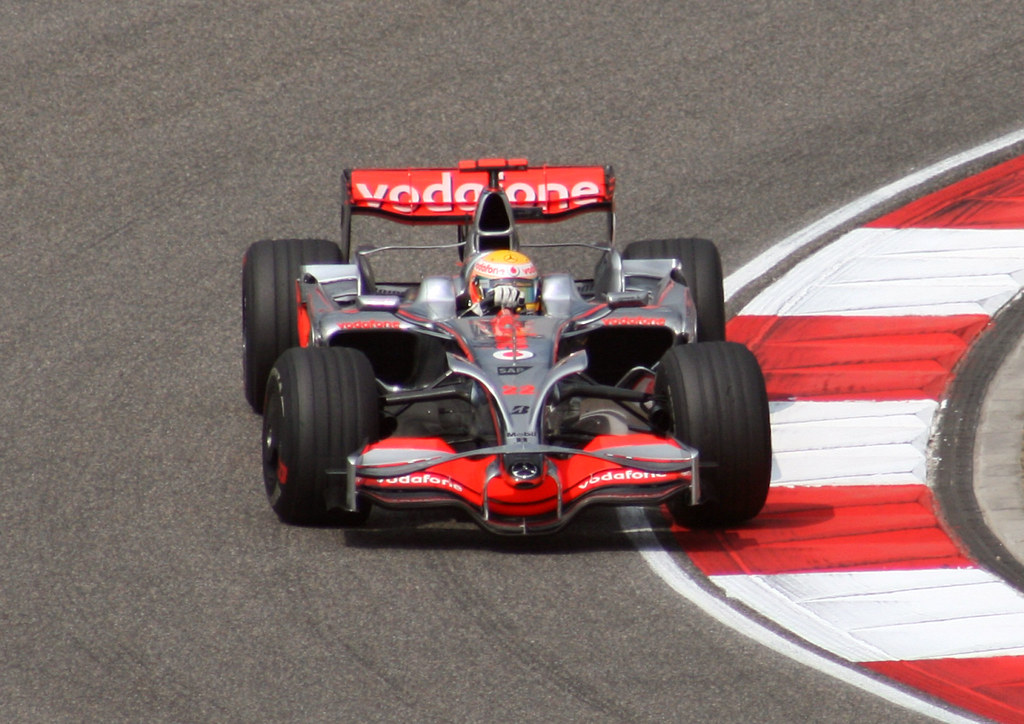Introduction
Located in Jiading, Shanghai, the Shanghai International Circuit has become one of the most beloved and challenging tracks on the Formula 1 calendar since hosting its first Chinese Grand Prix in 2004. With its unique layout including one of F1’s longest straights, the track provides ample opportunities for intense wheel-to-wheel racing and daring overtaking maneuvers.
Beyond the on-track action, the Chinese Grand Prix at the Shanghai Circuit has also borne witness to several memorable and pivotal moments in recent F1 history. Drama, controversy, surprise winners, championship-defining incidents – this race has seen it all over the years.
History of the Racetrack
The Shanghai International Circuit was constructed in 2003 and 2004 at a cost of $450 million, making it F1’s most expensive purpose-built facility at the time. The track was designed from scratch by renowned circuit architect Hermann Tilke to meet the strict standards required for an F1 venue.
The circuit features a unique layout inspired by the Chinese character “shang” (上) meaning ascent or above. Its flowing curves and variation of high and low speed corners posed an exciting new challenge for teams and drivers when it first appeared on the calendar.
The inaugural Chinese Grand Prix in 2004 was won by Ferrari’s Rubens Barrichello, but it was Michael Schumacher who set the fastest lap record that still stands today. Both Ferrari drivers praised the circuit, with Schumacher calling it “absolutely fantastic” and Barrichello stating the wide track made overtaking easier.
Historic Events from Chinese Grand Prix
Hamilton’s Pit Lane Crash
In 2007, championship leader Lewis Hamilton suffered a rare blunder when he slid straight into a gravel trap while entering the pits under safety car conditions. Hamilton beached his McLaren and was unable to return to the race.
It marked Hamilton’s first retirement of the season. While he went on to become the next year’s youngest world champion, the Shanghai crash demonstrated his fallibility in the title fight with teammate Fernando Alonso and Ferrari’s Kimi Raikkonen, ultimately costing him the title in his rookie season.

Ricciardo’s Win and Divebomb on Bottas
In 2018, Daniel Ricciardo passed 5 cars in 15 laps en route to a sensational victory for Red Bull. The most spectacular move saw Ricciardo divebomb past Mercedes’ Valtteri Bottas with two laps left to seize the lead and eventual win.
The overtake later was voted the overtake of the year, and many fans of Daniel Ricciardo still want his return to the Red Bull seat. His aggresive driving style made his memorable, but since he moved from Renault to McLaren, he was not able to go back to his previous form.
Verstappen’s Collision with Vettel
In 2019, title rivals Sebastian Vettel and Max Verstappen collided while battling for position. Vettel spun and ruined his front wing after contact with Verstappen’s Red Bull, effectively ending the Ferrari driver’s race.
The incident held championship implications as Vettel desperately tried to overcome early season struggles. It also marked the heated rivalry between himself and the young charger Verstappen, both unwilling to yield on track.
Track Description
The Shanghai International Circuit features 16 turns and is 5.451 km in length, making it an average circuit size for Formula 1. A lap opens with the technical Turns 1 and 2 leading into the left-right sweeps of 3 and 4, before cars arrive at the track’s signature 1.2 km straight between Turns 13 and 14 – one of the longest in F1.
Sector 1
Sector 1 features heavy braking zones and challenging curves. The massive Turn 1-2 complex requires excellent traction control and tests driver skill. Turns 3-5 then form a flowing set of corners taken at 100-150 kph.
Sector 2
Sector 2 amps up the speed with a series of unique corners. Turns 7 and 8 form a fork-like double-apex sequence taken at over 160 kph. Turn 11 is a nearly 90 degree bend demanding precision. Exiting smoothly sets drivers up for the critical final sector.
Sector 3
Sector 3 presents opportunities for breathtaking speed and overtaking excitement. The 1.2 km straight between Turns 13 and 14 sees cars reach over 320 kph before slamming the brakes for the tight hairpin at Turn 14, a prime passing spot. Good traction off the last corner accelerates cars onto the start-finish straight.
Summary
In its short history, the Shanghai International Circuit has witnessed several of Formula 1’s most dramatic moments while consistently providing close wheel-to-wheel action that few tracks can match. Many of the sport’s greatest champions have graced its asphalt over the past two decades.
Along with nearby nations like Japan and Singapore, China remains a key component of Formula 1’s eastern expansion and outreach to new audiences. The return of Chinese Grand Prix to the calendar brings a lot of joy to all the fans around the world – the twisty sector 1, lack of data for many teams, and the sprint weekend format – all of these components suggest, that we are in for a banger of a race in April.

